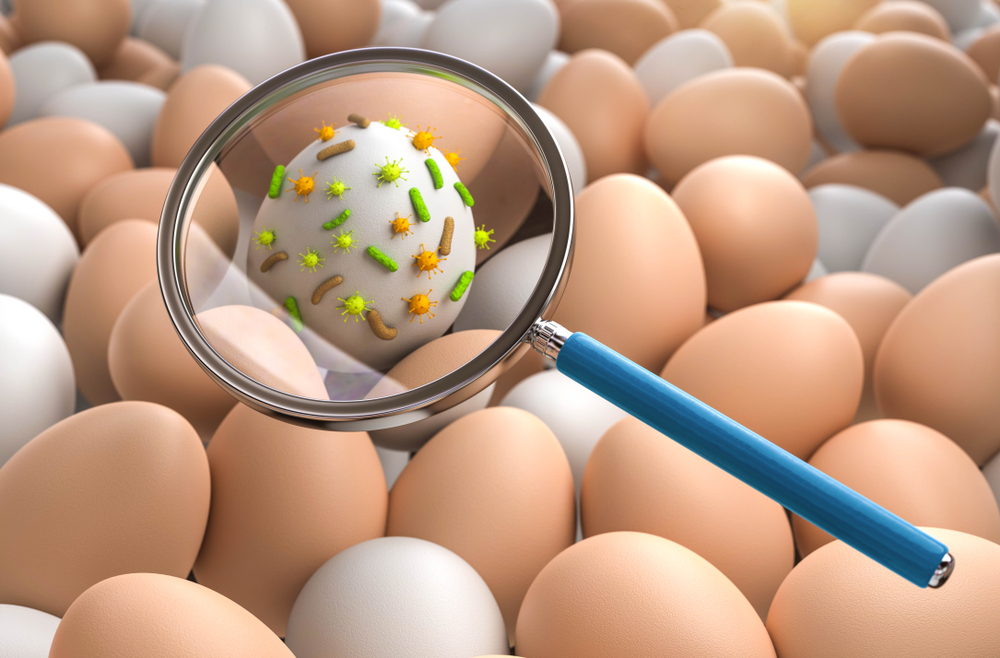Where to find Salmonella in food production environments?
Food poisoning from pathogens is a primary global public health concern, with countries devoting significant resources to tackle it. Bacterial food infections are a concern for both developed and developing countries, with Salmonella and Campylobacter being Europe's leading causes of foodborne illness. According to the European Centre for Disease Prevention and Control (ECDC), Salmonella caused the most human infections in 2018, resulting in 91,857 illnesses, while Campylobacter had 246,571 reported cases. AA foodborne outbreak occurs when at least two people become ill from the same contaminated food or drink, with 5146 such outbreaks reported in the EU in 2018, causing illnesses to 48,365 people, with Salmonella accounting for 33% of these outbreaks.
Read also: Democratizing food safety
Sources of Salmonella contamination in food production environments
The primary source of Salmonella is contaminated food products, mainly poultry, pork, and eggs. Poor hand washing and contact with infected pets can also lead to contamination. For example, the recent Salmonella outbreak in Slovakia, Spain, and Poland resulted in 1581 cases and was linked to infected eggs. In food production environments, it is essential to understand the sources of contamination to prevent its spread.
Animal species
Salmonella is a bacteria found in the intestines of various animal species, including domestic and wild animals. According to a study by Munck, there are nine primary sources of Salmonella: birds, bio solids-soil-compost, companion animals, horses, poultry, pigs, reptiles, ruminants, and wildlife. Wild birds, particularly migratory birds, have been identified as a significant reservoir of Salmonella, with hot spots in places like the Ukraine where migratory birds nest on their journeys between Europe, Africa, and Asia. These areas are significant distributors of the pathogen to other parts of the world. In addition to wild animals, domestic animals can also be sources of Salmonella. In the UK, it is estimated that about 40% of households, or 12 million people, own pets. The most common pets are dogs and cats, but many people keep exotic pets such as reptiles, birds, etc.
Environmental contamination
Salmonella can persist in the environment and be transmitted from contaminated surfaces to food products. This can occur in animal production facilities, food processing plants, and retail settings. In recent decades, the understanding of Salmonella as a plant pathogen has evolved. Salmonella can penetrate plant surfaces with the help of periplasmic enzymes, but this ability depends on factors such as the level of ripening and the presence of physiological wounds. Members of the Enterobacteriaceae family can also enter plants through stomata, hydathodes, and roots. Contaminated plants may not show signs of spoilage and can spread the pathogens pre- or post-harvest.
On the farm, produce is susceptible to Salmonella contamination from wildlife, contaminated irrigation water, untreated manure, poor hygiene practices by fieldworkers, and inadequate hygiene facilities like mobile toilets and hand-washing stations. Post-harvest contamination is also linked to poor hygiene practices.
In the US, food poisoning outbreaks from raw eggs and seafood are decreasing, but those from fruits and vegetables are rising. Despite low levels of Salmonella contamination found in pre-harvest production, fruits and vegetables have been linked to 130 outbreaks since 1996, with tomatoes being implicated in 15 multi-state outbreaks between 1990 and 2010. These outbreaks are often traced back to contamination during the production or processing stages.
Poor sanitation & hygiene practices
Sanitation is critical to controlling Salmonella contamination in food production environments. Insufficient cleaning and sanitizing equipment, surfaces, and facilities can lead to persistent contamination and the spread of the pathogen. Food producers must also practice good hygiene, including frequent and thorough hand washing, to prevent contamination of food products. Poor hygiene practices can result in the direct transfer of Salmonella from the hands to food products.
Cross-contamination
Cross-contamination occurs when bacteria are transferred from one food product to another. For example, when raw meat juices come into contact with ready-to-eat foods, there is a risk of cross-contamination. Proper temperature control is essential to preventing the growth of Salmonella in food products. Foods must be stored, transported, and cooked at the correct temperatures to reduce the risk of contamination.
Read also: Food Safety in the Digital Age
Best practices to prevent Salmonella contamination in food production
We would recommend following several best practices to prevent Salmonella contamination in food production environments:
- Sanitation: Regular and thorough cleaning and sanitizing food production areas, equipment, and surfaces can help prevent Salmonella contamination.
- Hygiene: Food handlers should practice good hygiene, including frequent hand washing, to reduce the risk of Salmonella contamination.
- Temperature control: Proper temperature control is critical to prevent Salmonella growth and contamination. Foods should be stored, transported, and prepared at the appropriate temperatures.
- Cross-contamination prevention: Raw meat, poultry, and eggs should be kept separate from ready-to-eat foods to prevent cross-contamination.
- Use of safe water: Clean and safe water should be used in food production processes, including irrigation, processing, and cleaning.
- Safe animal feed: Animal feed should be free of contaminants, including Salmonella, to prevent contamination of animal products, such as poultry and eggs.
- Proper animal housing: Crowded animal housing conditions should be avoided to reduce the risk of Salmonella contamination.
- Quality control: Regular monitoring and testing of food products and processing environments can help prevent Salmonella contamination.
- Training and education: Food handlers should be trained in food safety practices and understand the importance of proper food handling to prevent Salmonella contamination.
- HACCP implementation: Implementing a Hazard Analysis and Critical Control Points (HACCP) program can help identify potential sources of contamination and prevent Salmonella contamination in food production.
- Rapid food production environment testing: consistently and regularly monitor and assess the effectiveness of food safety programs to reduce the risk of Salmonella contamination in food production environments.

